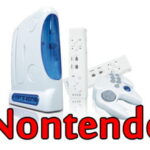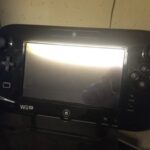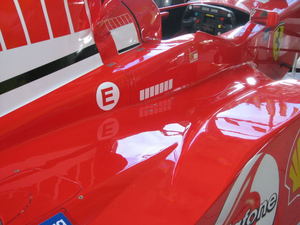Many of us who grew up in the ’80s can remember when video games were just beginning to become a mainstream form of home multimedia entertainment. Our lucky generation has seen the successful early development of console gaming while it gradually replaced the arcade experience. Each generation is influenced by their age and individual life circumstances, but I think for the most part we can all draw back on this particular childhood era with joyous nostalgia.
Although preceded by a number of moderately successful home-console attempts like the Odyssey and several stand-alone Pong games, the most impressive and memorable contribution was Atari’s VCS CX2600, more commonly known simply as the Atari 2600. It was the first successful system to utilize interchangeable cartridges as opposed to playing a limited number of games built into the console itself. This ability set a new standard and was soon matched in the following years by Colecovision and Mattel’s Intellivision. Arcade classics like Pac-Man and Space Invaders were finally available to play from the comfort of our homes. I have vivid memories of gathering around my TV with friends having a great time destroying Asteroids and defending the galaxy from the evil Qotile in Yar’s Revenge. As enjoyable as these times were, it wasn’t until 1985 that I truly began to appreciate the quality entertainment that home gaming can offer.
As interest in gaming began to wane due to the successive release of all too similar products, a new system from Japan appeared to revitalize it. The third generation Nintendo Entertainment System (NES), in my opinion represented the very best era in home console video games. Released in Japan in 1983 under the name Famicom (Family Computer), many freezing and programming errors that plagued the early Japanese systems were [almost] completely ironed out by the time it reached the United States in 1985. The result was a redesigned, next generation home gaming console that vastly outperformed anything else available at the time. With early release titles like Gyromite, Duck Hunt, and Super Mario Bros., the NES offered a multitude of rich and memorable gaming experiences unlike anything before it. Who can forget Nintendo’s Johnny 5 lookalike companion R.O.B. (Robotic Operating Buddy)? Well, almost everyone. Now these useless, obsolete peripherals are sought after by vintage collectors to compliment the Star Wars figurines on their mantles.
While Nintendo dominates the gaming market uncontested, another soon-to-be gaming goliath was preparing to jump into the pool and claim some of the glory. Sega’s Mark III (Master System) initially faced great difficulty as Nintendo was so far in the lead with their NES already having secured most of the quality third party developers. Publishers like Konami, Namco, Capcom, etc… were eager to design games for the high profile NES console. As part of the deal, however, the companies agreed not to make games for any other company. By the time the Sega Master System hit the scene they were all but forced to develop their own games. They weren’t completely in the dark though. Luckily, Activision and Parker Brothers were still available to develop games for Sega as well, which helped keep them afloat, barely. Despite their unfortunate disadvantage, Sega was actually able to produce some timeless classics such as Golden Axe, Shinobi, Alex Kidd in Miracle World, and my favorite, Phantasy Star (one of the greatest RPGs I’ve ever experienced).
Due to a series of investigations and lawsuits claiming monopolistic practices, Nintendo eventually loosened its grip on third party developers, finally allowing for Sega to utilize their contributions. By this time it was too late to rejuvenate the ill-fated Master System. They managed to “Hang-On” (another substantial Sega title) for a few more years until they finally pulled the system’s adapter in 1992. Fortunately, their demise didn’t come before leaving a considerably miraculous mark on the gaming world. The Sega Master System is still highly regarded and the system itself is considered on par in quality with the NES, despite the turmoil they’ve endured. As far as the games themselves are concerned, I don’t think it can be argued that, as a whole, the quality of NES’s titles far surpassed those of the Sega Master System. One can only imagine what would have been if Sega had access to the third party developers that Nintendo had their arms around.
Many regard the NES as being the first installment of the 8 bit console market, but this is simply incorrect. In fact, the second generation game consoles were predominantly 8 bit systems, including the Atari 2600. It wasn’t until Sega’s forth generation16 bit contribution, the Genesis, that people started categorizing console systems by their bits. With Nintendo being their main competitor, it was the first to be regarded as among the lesser, 8 bit line. Sega’s advertizing campaign relied heavily on the “bit” caparison of their newest system to those of the previous, third generation; including their own 8 bit Mark III, or Sega Master System. The success of their campaign prompted the use of the rather abstract term as a standard way to summarize overall capability. It’s actually a somewhat arbitrary term, as there are countless other factors involved in determining the performance of a system.
All throughout these years, I must say I was partial to Sega, largely due to my instinctive tendency to root for the underdog, but there’s no denying that my childhood experiences with the NES were so much more memorable. Discovering the warp zone for the first time, beating Mike Tyson (after the thousandth attempt), and traveling through Hyrule gathering Tri-Force pieces to defeat Ganondorf are memories I’ll always treasure. I can always replay any of these aforementioned games, but recreating the youthful experience of these accomplishments for the first time will forever be impossible. There’s always a period in each of our lives that bring back strong feelings of nostalgia, and this was mine. Much like I’m sure today’s youth appreciates the PS3 or Xbox 360, and will one day draw back to their experiences with them with fondness, I’ll always cherish my memories of playing with my old, long lost childhood pal, the Nintendo Entertainment System.
http://www.thegameconsole.com/videogames83.htm




